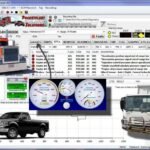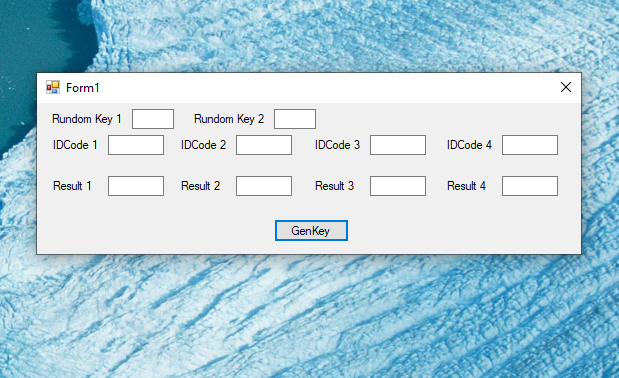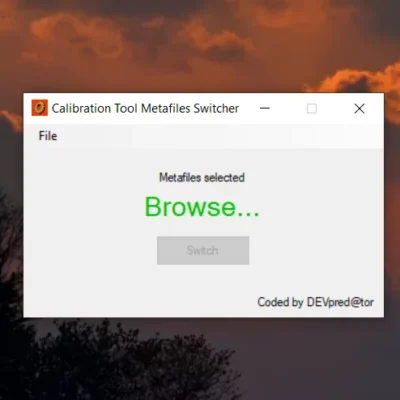CIRCUIT DESCRIPTION:
PCS1 is used to control oncoming, off-going, and holding pressure in any one of five clutches. This solenoid is referred to as Pressure Proportional to Current (PPC) since the output hydraulic pressure supplied by this solenoid is proportional to the controlled current command.
The TCM uses information from the turbine and output speed sensors to detect if a clutch is slipping. The clutch being controlled by PCS1 varies depending on the shift that is being completed. DTC P2723 sets when the TCM detects an incorrect oncoming ratio (range to range) for an accumulated number of occurrences.
ACTION TAKEN WHEN THE DTC SETS:
When DTC P2723 is active, the following conditions occur:
1. If failure occurs while in a forward range, the transmission shifts to the previous range.
2. If failure occurs while in N (Neutral) or R (Reverse), the transmission locks in N (Neutral).
3. If the shift selector is moved to N (Neutral), the transmission shifts to N (Neutral) (some cases may lock in N (Neutral)).
4. If the shift selector is moved to R (Reverse), the transmission shifts to R (Reverse) or N (Neutral)
5. If the shift selector is returned to a forward range and the transmission is compromised by overspeeding or a direction change, the transmission shifts to N (Neutral).
6. The CHECK TRANS light illuminates (non-OBD II strategy).
7. TCM inhibits Torque Converter Clutch (TCC) engagement.
8. The DTC is stored in the TCM history.
9. The TCM forces Variable Modulated Main off.
10. The TCM freezes shift adapts (DNA).
CONDITIONS FOR CLEARING THE DTC:
Use the diagnostic tool to clear the DTC from the TCM history. The TCM automatically clears the DTC from the TCM history if the vehicle completes 40 warm-up cycles without the DTC recurring.
DIAGNOSTIC AIDS:
The following procedures are not documented in any OEM procedures or in any OEM Troubleshooting or Service information and should not be used as a method to diagnose any transmission DTCs, function, or shift quality concern:
1. Back-probing any connections used for transmission features or functions may damage and/or unlock terminals from the back-probed connector creating permanent or intermittent shorts and/or open circuits. If possible, use the J-39700 Breakout Box, the appropriate harness adapters, and appropriate magnetic overlays to troubleshoot the vehicle.
2. Load-testing any transmission-related circuits with any other electrical devices such as vehicle lamps or relays, especially with the TCM connected to the harness. Use J-39700 Breakout Box and appropriate harnesses with the diagnostic tool to monitor the circuit performance in question unless otherwise specified in the various Troubleshooting information.
3. Piercing a wire to check for voltages, shorts-to-grounds or other wires anywhere in the circuit but especially at the TCM. This creates a leak path for moisture and damages the wire and insulation.
4. This DTC indicates the oncoming clutch being controlled by PCS1 is not applied or applied too slowly. This could indicate a leak or obstruction in a specific clutch apply circuit. Check the diagnostic tool failure record data for previous or current range information to determine the specific shift when the DTC was set. Refer to SOLENOID AND CLUTCH information to determine which clutch circuit is suspect.
If the condition is intermittent, connect the diagnostic tool and select the speed sensor indicated by the DTC. If the signal is erratic, investigate and eliminate the following:
1. Intermittent wiring connection
2. Excessive vibration (driveline or engine torsionals)
3. Irregular sensor gap (loose sensor, loose or damaged tone wheel)
Inspect and confirm that the OEM engine rating does not exceed the transmission model rating. Also inspect for the presence of an add-on engine power package or module. Whenever the engine horsepower or torque is increased over the transmission factory rating, a shift flare condition may occur leading to the DTC indicated.
NOTE: Clutch failure due to an OEM engine rating exceeding the OEM transmission rating, or the installation of an engine power package or module will not be covered under the OEM transmission warranty.


 AGCO
AGCO ALLISON
ALLISON BENDIX
BENDIX BOBCAT
BOBCAT CAT
CAT CLAAS
CLAAS CNH
CNH DAF
DAF DETROIT
DETROIT EATON
EATON FREIGHTLINER
FREIGHTLINER HINO
HINO HITACHI
HITACHI ISUZU
ISUZU JCB
JCB JOHN DEERE
JOHN DEERE JPROZZ
JPROZZ MAGIC TUNER
MAGIC TUNER MAN
MAN Navistar
Navistar PACCAR
PACCAR PERKINS
PERKINS PF DIAGNOSE
PF DIAGNOSE PSI POWERLINK
PSI POWERLINK RENAULT
RENAULT SCANIA
SCANIA THERMO KING
THERMO KING UD NISSAN
UD NISSAN VOLVO
VOLVO WABCO
WABCO ZF TESTMAN
ZF TESTMAN
 BELL
BELL BENDIX
BENDIX BOBCAT
BOBCAT CARRIE
CARRIE DAF
DAF DETROIT
DETROIT EATON
EATON FUSO
FUSO MACK
MACK
 Cumminz
Cumminz ISB4.5 CM2150
ISB4.5 CM2150 All Engines (2017 Emissions)
All Engines (2017 Emissions) PACCAR
PACCAR
















Reviews
Clear filtersThere are no reviews yet.